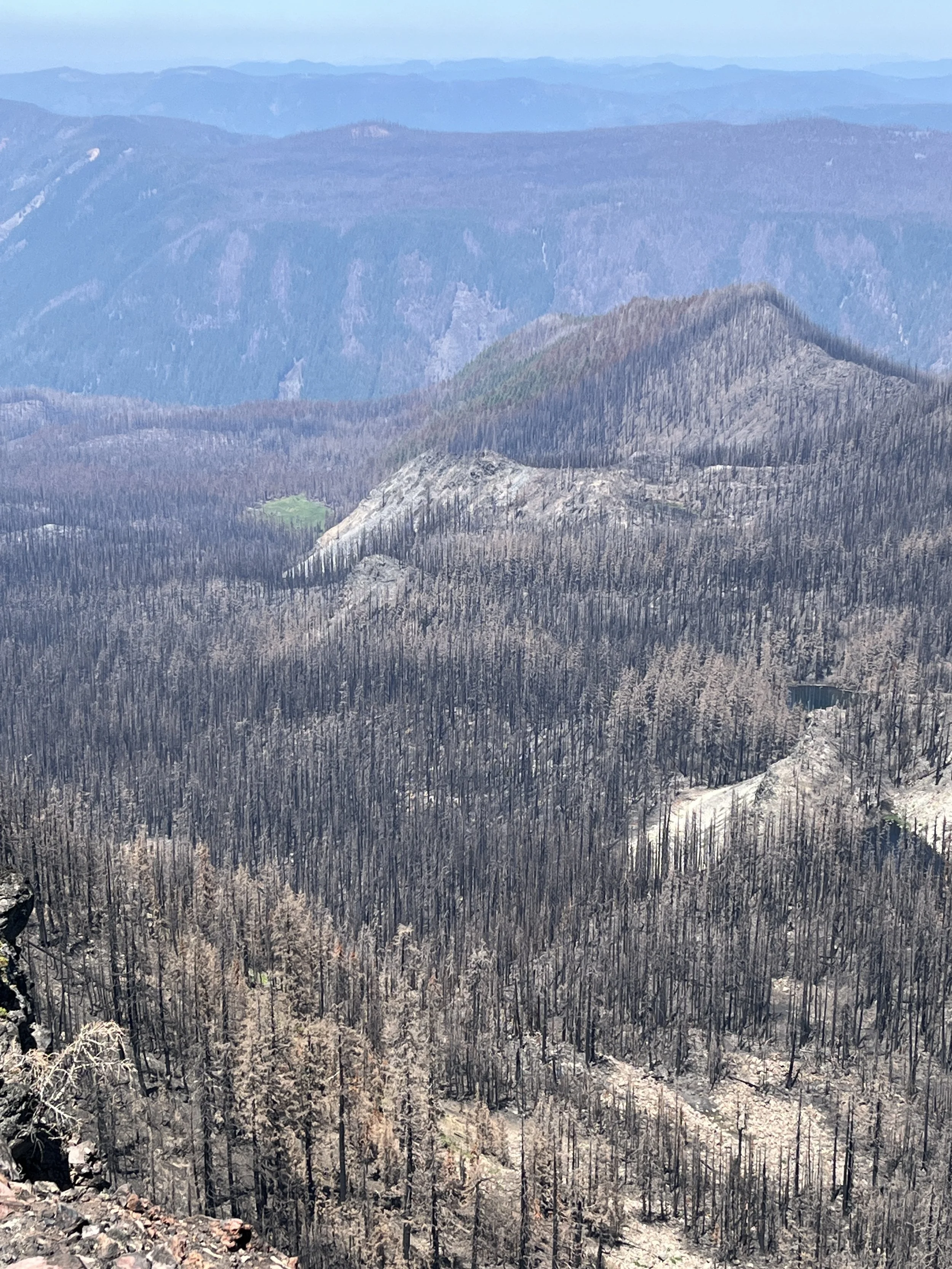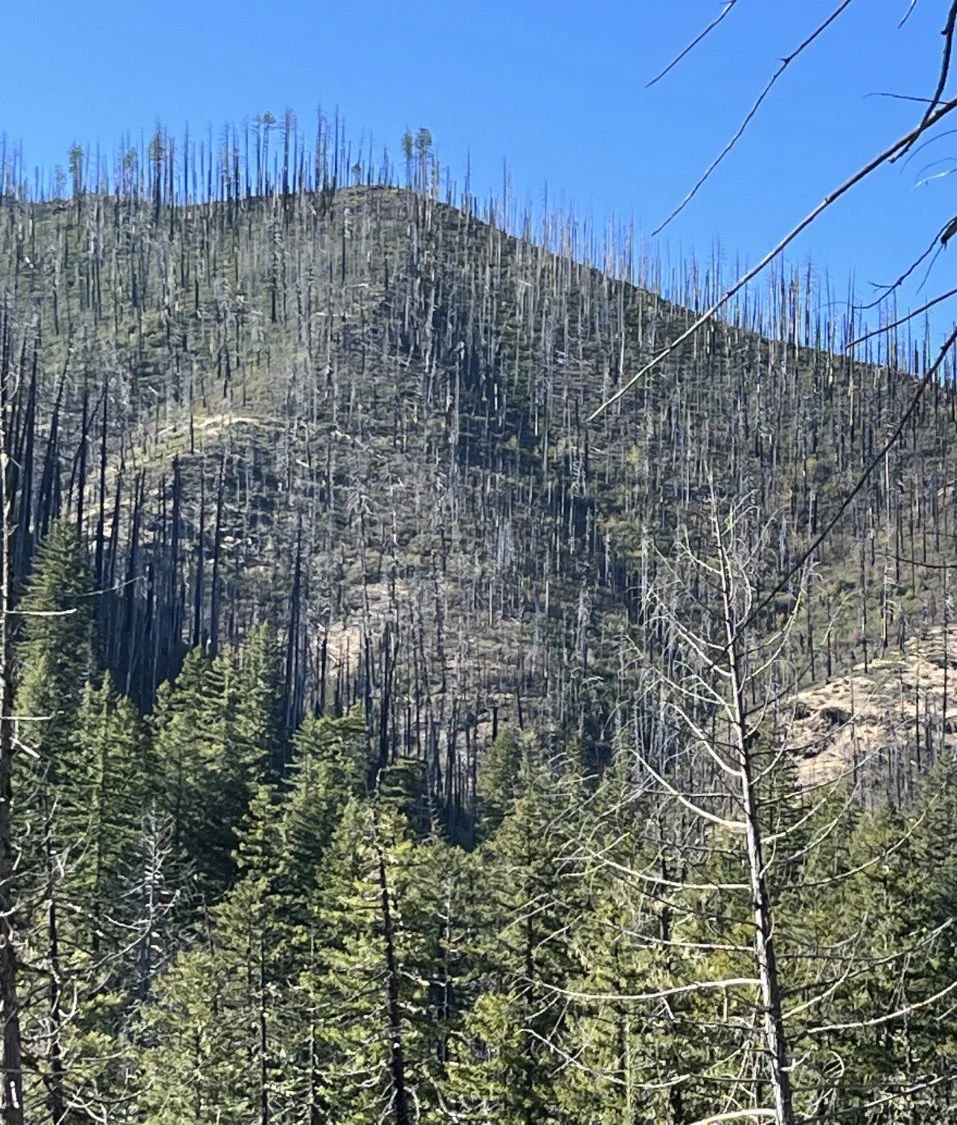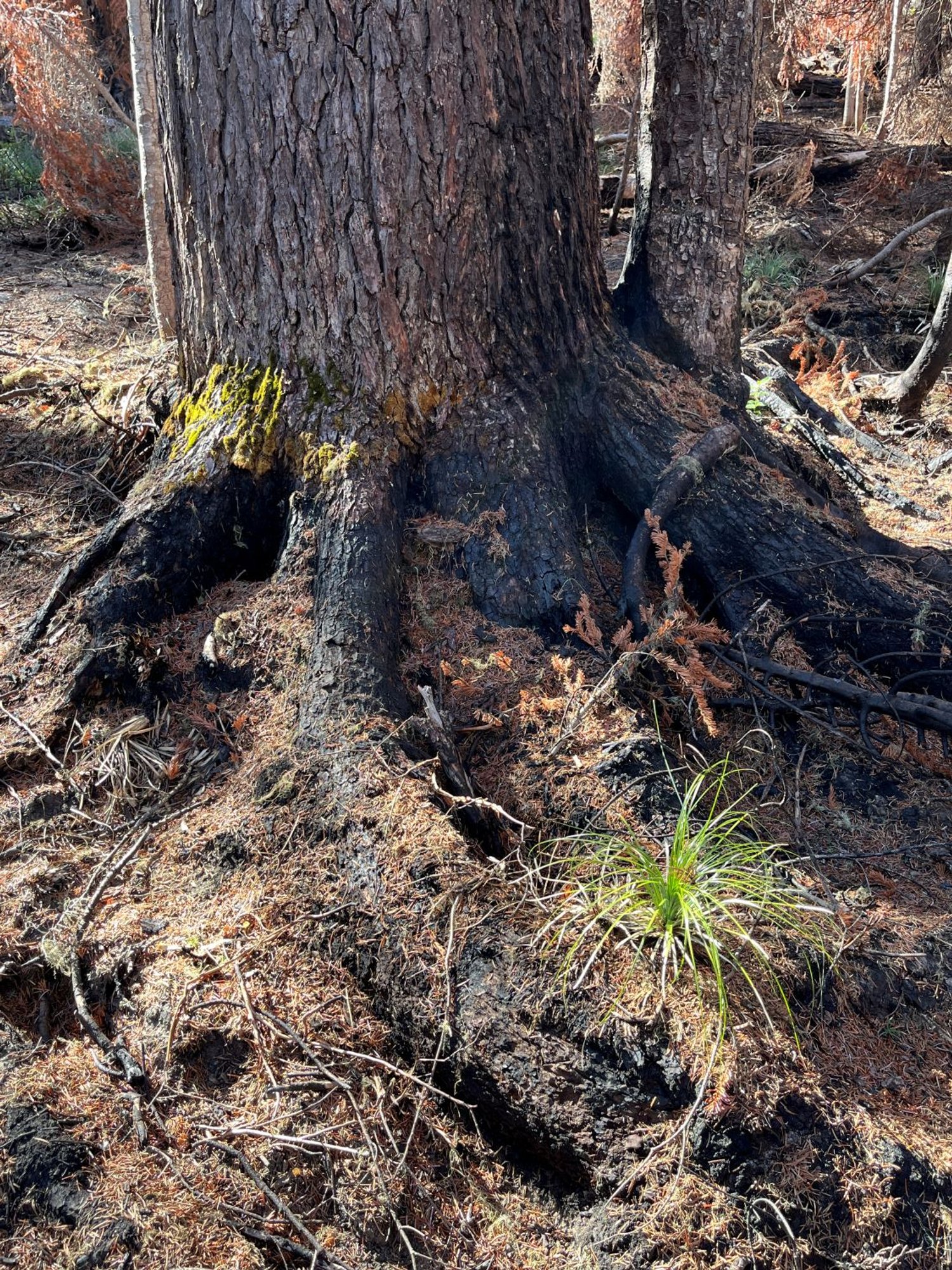
Wildfire
Wildfire is a complex phenomenon exhibiting both destructive and creative effects. In just hours wildfires can consume and drastically alter what took centuries to develop, while simultaneously creating the conditions for eventual forest renewal. In terms of the amount of land affected and the severity of effects, wildfire is the most significant disturbance affecting old-growth forests in the western Cascades today and that will likely continue to be true for the foreseeable future. This has been true over the centuries historically as well, with the exception of an approximate 45-year period of widespread clearcutting (~1950-1995) in the federally-owned lands of the Cascades.
Wildfires vary greatly affecting development and persistence of old-growth in myriad ways. Patterns of wildfire characteristics, such as fire frequency and severity, are often termed fire regime. In general, fires occur less frequently but burn more severely in cooler, wetter areas, and burn more frequently but with lower severity on warmer, drier sites. More severe fires kill most of the trees on a site, resetting the successional clock and initiating a new stand. Less severe fires leave substantial amounts of live trees and other organisms on the site, while simultaneously creating space and conditions for a new generation of trees and other plants to become established.
Fire regimes in the Cascades have changed significantly since European-American colonization. While lightning ignitions have historically been a major source of wildfires and continue to be so today, the near elimination of fire ignition by indigenous tribes combined with active fire suppression by public land management agencies and private land owners have significantly reduced fire occurrence. Simultaneously, European-American settlement and the continued spread of people into fire-prone portions of the landscape introduced new sources of fire ignition and hazard. Actions by land management agencies, e.g., logging and fuel treatments, have also significantly affected fire behavior and effects.
Changes in fire regime can greatly affect old forests. For example, high densities of trees and shrubs due to fire suppression in areas of historically frequent fire (e.g., 20–40-year fire return cycle) are thought to heighten the potential for uncharacteristically severe fires and increase physiological stress on older fire-adapted trees. This appears to be the case today in the dry mixed-conifer forest in the southern part of the Willamette National Forest and eastern portion of the Mt. Hood National Forest. Conversely, significant increases in the area burned by high-severity fire may also put old forests at risk in areas where fire has been infrequent in the past, such as the moist forests of northwestern Oregon. Unfortunately, climate change is now exacerbating changes in fire regime in both dry and moist old forests of the Cascades, negatively affecting old-growth forests.

Before the firestorm, Beachie Fire and Opal Lake (9/2/20)

French Creek Ridge (Lionshead Fire (2020)

Cedar Creek Fire (2022)

Tumblebug Fire (2009) high severity

Holiday Farm Fire (2020) scattered survivors

Holiday Farm Fire (2020) high severity

Terwilliger Fire (2018) mixed severity

Clark Fire (2003) regeneration

Cedar Creek Fire (2022) mortality from root damage